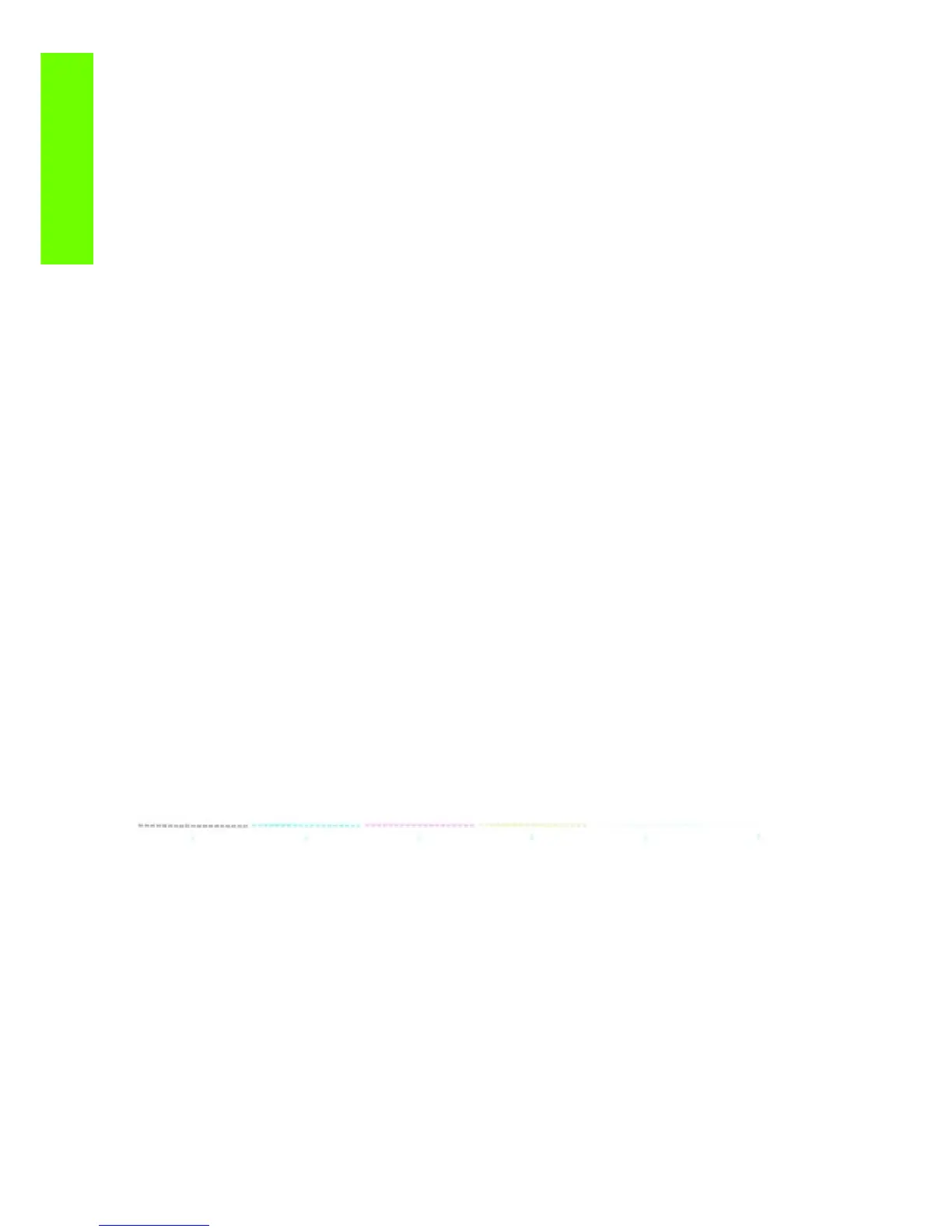238 Chapter 5 Print Quality
Print Quality
1. In this area there are four checks for the pen to pen alignment in the scan axis direction (Pen2Pen-
Fwd or Pen2Pen-Rev). It is forward and reverse.
• The top pattern is related to the front printhead (nearest to the user when doing the pen
replacement).
• The bottom pattern is related to the rear printhead (furthest from the user when doing the pen
replacement).
The area to check is the junction (marked with a “-”) of the black with the rest of colors.
2. The bidirectional check is at the top, marked as Bidir.
a. The top pattern is related to the front printhead (nearest to the user when doing the pen
replacement).
b. The bottom pattern is related to the rear printhead (furthest from the user when doing the pen
replacement)
Check that the lines are continuous without a gap. The junction is marked with a “-”
3. The pen to pen alignment in paper advance direction (PAD) is marked as number 3.
a. The top pattern is related to the front printhead (nearest to the user when doing the pen
replacement).
b. The bottom pattern is related to the rear printhead (furthest from the user when doing the pen
replacement)
The area to check is the junction (marked with a “-”) of the black with the rest of colors.
4. The alignment in the scan axis direction between both printheads of the same color is marked as 4a
(in forward direction die2dieSAD-Fwd) and 4b (in reverser direction die2dieSAD-Rev).
The area to check is the junction (marked with a “-”). The lines have to be continuous.
5. The ThetaZ of the printhead are checked in the area marked as 5. It checks in forward (Tz-Fwd) and
reverse direction (Tz-Rev).
The area to check is the junction (marked with a “-”). The lines have to be continuous.
6. The area marked as number 6 is a reference legend that shows junction misalignments of 2, 4 and
6 dots. The junction to check has to be below 4 in all the cases. If the error seems to be above 4
dots, then realign the printheads again.
Die Overlap Alignment.
The Die Overlap alignment is at the bottom of the plot. The area to check is only the bottom junction pattern
for all the colors. The clearest band must be around the 0 (±3 dots). Every band is equal to a one dot error.
Corrective action
In order to solve any problem in the alignment, perform the following:
• Repeat the printhead alignment. Most recommended papers are glossy papers were pen alignment
accuracy is best. There are some paper types that are not suitable for Printhead Alignment
(transparent, translucent
• Try cleaning the Printheads if the error continues.
• If the error persists, replace the affected printhead.
• If there is an issue in the ThetaZ and it cannot be fixed, check if the paper is working with the OMAS
sensor. There are some papers that cannot be controlled by the OMAS sensor. If the paper is a type
that should work with the OMAS sensor, check the functionality of the sensor.

